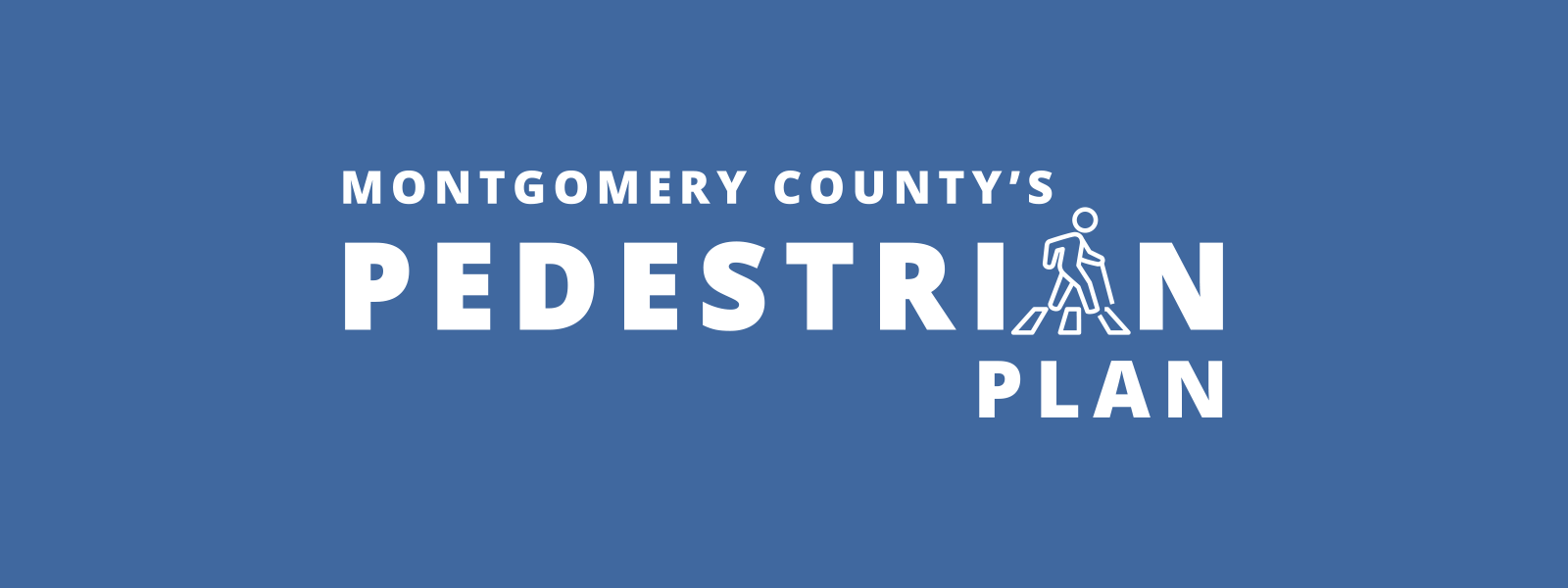
Planning Board shows support for draft recommendations and equitable engagement efforts to date; provides suggestions for next steps on countywide plan that will offer strategies for enhanced pedestrian connectivity, safety, and accessibility across Montgomery County
WHEATON, MD – The Montgomery County Planning Department, part of The Maryland-National Capital Park and Planning Commission, presented the Pedestrian Master Plan’s draft design, policy and programming recommendations to the Montgomery County Planning Board on Thursday, September 22. The Planning Board expressed support for the draft recommendations in the Pedestrian Master Plan and shared recommendation feedback with Planning Staff.
The Pedestrian Master Plan is Montgomery Planning’s first dedicated effort to specifically improve the countywide pedestrian experience. The draft recommendations offer solutions and strategies to make walking and rolling safer, more equitable, and more direct in support of the plan’s four goals:
- Increase walking rates and pedestrian satisfaction
- Create a comfortable, connected, convenient pedestrian network
- Enhance pedestrian safety, and
- Build an equitable and just pedestrian network
View the draft recommendations
View the September 22 Planning Board staff report
“We are really excited to hear the great feedback from the Planning Board, and we look forward to incorporating their ideas,” said project manager Eli Glazier. “If anyone has any feedback or ideas that they want to share, please reach out to me at Eli.Glazier@montgomeryplanning.org or on social media using #walkinghere to let us know what you think.”
Equitable engagement efforts
The Planning Board also received an update from staff on the equitable engagement efforts for the plan. Recent engagement and outreach efforts include:
- Promoting draft recommendations in 53 Montgomery Parks located in Equity Focus Areas with text back technology and graphics provided in English, Spanish and Mandarin.
- Sending 3,500 postcards to religious institutions, civic associations, and homeowner’s associations with the call to action to meet with staff provided in English, Spanish and Mandarin.
- Soliciting feedback through an online prioritization activity to help guide the county’s Capital Improvement Program.
- Meeting in person and virtually with civic associations, advisory boards, community groups countywide.
- Advertising on bus shelters and RideOn bus routes serving Equity Focus Areas.
- Promoting plan recommendations and feedback on social media using #walkinghere
Next steps
Planning Staff will continue to make progress on completing the Pedestrian Master Plan. With recommendation development ongoing, the master plan team is on schedule to complete the draft plan by the end of the year. The community is invited to provide continued feedback on the draft recommendations and use the online Pedestrian Prioritization tool.
The Pedestrian Master Plan draft recommendations
The recommendations build on years of analysis and community feedback to establish a path toward making Montgomery County safer, more navigable, and more comfortable for pedestrians of all ages and abilities. The recommendations are organized around six themes: build, maintain, protect, expand access, monitor, and fund. Notable recommendations are:
- Plan to build more sidewalks faster
- Eliminate the need to push a button to cross the street
- Assume county control of state highways in some locations
- Improve the quality of pedestrian lighting
- Remove sidewalk obstructions
- Identify new revenue sources to fund pedestrian improvements
The recommendations are informed by the March 2022 Pedestrian Master Plan Existing Conditions Report, which provided a deep understanding of existing pedestrian conditions and attitudes in the county and was based on four main data sources:
- A statistically valid pedestrian survey, sent to 60,000 households, that documents pedestrian activity and perceptions for the county as a whole and for different land-use types;
- A student travel tally that describes how public-school students arrive to and depart from school, completed by over 70,000 students;
- A comfortable pedestrian connectivity analysis that catalogs pedestrian conditions along the entirety of the pedestrian transportation network in Montgomery County; and
- A 2015–2020 pedestrian crash analysis identifying trends in pedestrian crashes.
About the Pedestrian Master Plan
The Pedestrian Master Plan will identify best practices, analyze information from people who walk and roll, and examine ways of improving the pedestrian experience using several analytical tools, including a pedestrian comfort analysis and a crash analysis. The resulting Pedestrian Master Plan will provide county leaders and agencies, such as Montgomery County Department of Transportation and the Department of Permitting Services, recommendations and guidance related to:
- Prioritization of pedestrian pathways and safe crossings.
- Pedestrian-supportive policies and operational practices.
- A pedestrian design toolkit of treatments and operational approaches to traffic calming, signal timing, accessibility features, and more.
Recommendations will support making Montgomery County universally accessible to pedestrians of all ages and abilities with particular attention paid to those pedestrians using mobility devices like wheelchairs or canes. The Pedestrian Master Plan will complement the 2018 Bicycle Master Plan, Thrive Montgomery 2050 (currently under County Council review) and other Vision Zero-related efforts to make streets safer and more accessible, including the 2019 Veirs Mill Corridor Master Plan and the 2019 Aspen Hill Vision Zero Study.